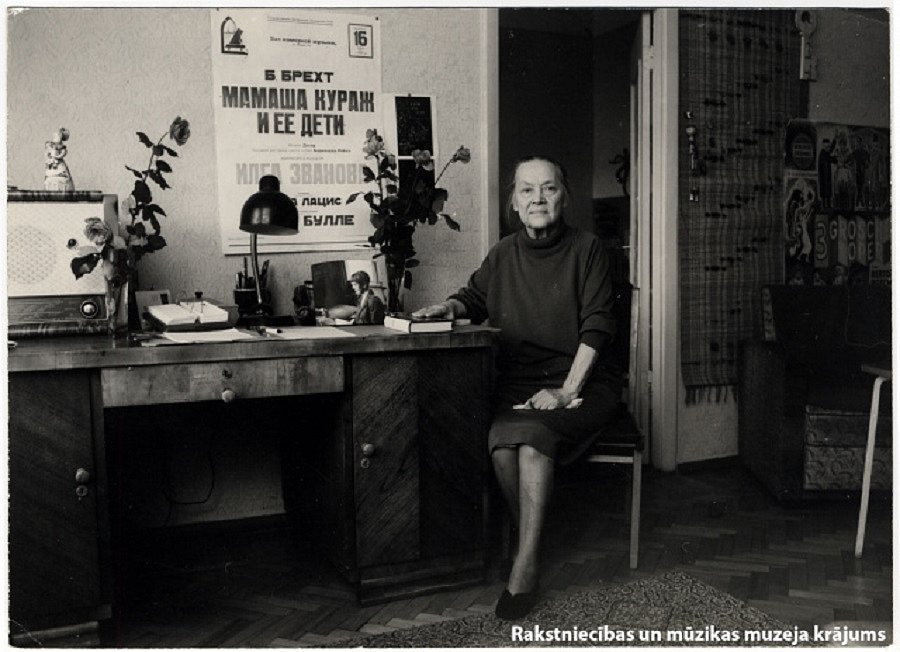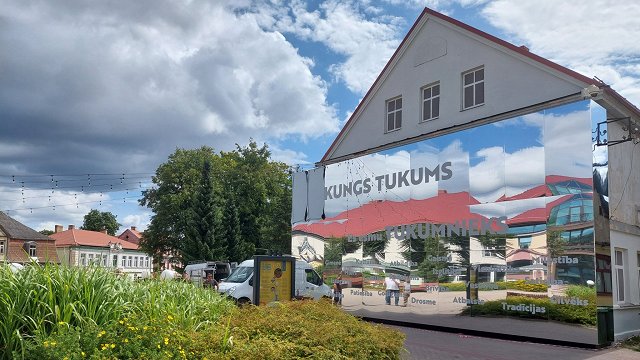Lācis was a luminary of 20th-century theater but has hitherto gone almost unnoticed in her native country.
"Reading her texts about the theater, her memories on children's theater, you notice she always had a tendency of not wanting to be tied to specific institutions. This was a widespread trend in the early 20th century, of ceaseless experiments and finding ways of improving and changing theater," said Andris Brinkmanis.
Asja (real name Anna) Lācis came to Brinkmanis' attention during his master's studies in Italy as he was writing a course paper on the relationship between art and education. He was drawn to Lācis' - she was a director, an actress and a teacher - views on theater and its uses.
In 1918 she graduated from the Bekhterev Psychoneurological Institute in St. Petersborg and later set up an experimental children's theater project in Oryol, involving street children, orphans and homeless people in her projects.
"I think that she and others living in Rīga and Russia in the early 20th-century were fascinated with the idea that there might be a change of power and a revolution. They had faced the Tsarist environment. As young people, they thought that it should be changed and that a new society should be set up where people could have more say over their lives. They tried introducing this idea in theater," said Brinkmanis.
Brinkamnis says that Lācis' point of view does not fully fit, or is interpretable in the context of Soviet ideology, as Lācis was a European, free-thinking spirit whose ideas fit those of Mayakovsky, Meyerhold and the Italian futurists.
"There was a desire to leave behind the things of old, to create something completely new and create possibilities for young people to express themselves," said Brinkmanis.
"She stressed that theater doesn't have to be psychological and that it can also have functions that are educational and instructional. She tried to find out how to achieve this with experiments. In this respect she is a thinker and explorer similar to Bertolt Brecht, with whom she worked in 1923."
Earlier, Brinkmanis had curated an exhibition for the Documenta 2017 creative forum held in Germany, but Asja Lācis. Engineer of the Avant-Garde, on show at the National Library of Latvia, will have more exhibits from a number of Latvian, Russian and German museums as well as private archives.
"There's somewhat more material in Rīga, as there was little use in showing Latvian-language material in Germany. In Latvia, it makes sense doing it and it's interesting," said Brinkmanis.
"People will find it interesting to see her notes and the way she cooperated with different writers and cultural employees in Latvia. She always remained an active culture employee and director."
The exhibition was designed by Rihards Funts. Pierced cardboard stands supplement ascetic and futuristic metal vitrines. At a distance, these look like enlarged pores. Brinkmanis told Latvian Radio that the concept for the design is connected to Neapel, a text Lācis wrote together with philosopher Walter Benjamin.
Asja Lācis. Engineer of the Avant-Garde will be on show until March 31 on the fourth floor of the National Library of Latvia.



























